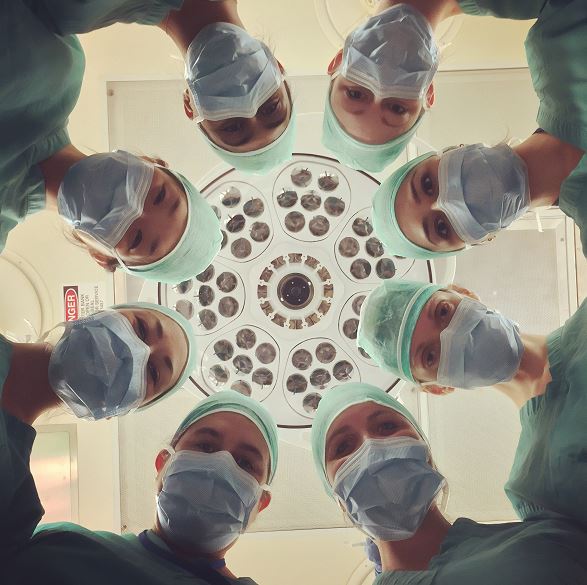
@ShahidNShah


Telemedicine has transformed the way patients receive care, especially during recovery after surgery. It enables individuals to stay connected with healthcare professionals through secure video consultations, digital platforms, and monitoring tools, without the need to visit a clinic. For patients recovering from bunion surgery, this approach has made healing more convenient, safer, and more effective. In the past, postoperative care involved several in-person appointments, often requiring travel when walking was still uncomfortable. Now, with the integration of telemedicine, recovery can be closely supervised from home while maintaining the same standard of professional medical attention.
The recovery period after surgical treatment for bunions is a crucial phase that determines how well the bones, joints, and soft tissues heal. Patients need ongoing guidance about wound care, mobility, and pain management to ensure long-term success. Telemedicine allows doctors and nurses to monitor healing progress remotely, giving patients real-time feedback and reassurance. Through video calls and photo updates, surgeons can assess the surgical site, track swelling, and adjust treatment plans as needed. This approach reduces travel, saves time, and limits the risk of infection that sometimes comes with frequent hospital visits.
With telemedicine, doctors can observe how the incision and alignment are healing through high-quality video evaluations. Patients can describe pain levels and receive accurate adjustments to medication or exercise recommendations. Studies have shown that virtual follow-ups are often as effective as in-person visits when it comes to detecting potential complications. Early detection through remote monitoring allows doctors to intervene before small issues turn into serious setbacks. This not only helps patients recover faster but also builds confidence in their post-surgical care plan.
Recovering from foot surgery requires patience, consistency, and communication. Telemedicine enhances patient engagement by making follow-up easier and more comfortable. Regular virtual consultations encourage patients to stay on track with physical therapy, wound cleaning, and activity limitations. Because these check-ins take place in a familiar environment, patients feel more relaxed asking questions and discussing challenges. This steady communication creates trust between the patient and medical team, leading to better compliance and improved healing outcomes.
For many individuals, especially those who live far from their surgical center or have limited mobility, traveling for check-ups can be exhausting. Virtual consultations eliminate the need for frequent travel, saving both time and physical effort. Avoiding crowded waiting rooms also reduces the risk of exposure to germs, which is particularly beneficial during the early healing phase when the foot is still sensitive. By blending virtual and occasional in-person visits, healthcare professionals can maintain a safe and balanced follow-up routine that meets the needs of each patient.
Advances in surgical technology have made telemedicine even more effective for recovery. Modern bio-integrative implants, such as: bunions implants that are designed to integrate naturally with bone as it heals. These materials reduce the likelihood of irritation, hardware pain, or the need for removal surgeries later. When such innovations are combined with remote postoperative monitoring, recovery becomes more predictable and patient-friendly. Telemedicine enables surgeons to track progress confidently, knowing that advanced materials support stable, long-term results.
Another key advantage of telemedicine is its educational value. Many healthcare platforms now include instructional videos, digital care guides, and automated recovery reminders to help patients follow each stage of healing. Learning how to manage swelling, recognize warning signs, and maintain cleanliness of the surgical site helps patients feel more in control of their recovery. Consistent access to accurate, easy-to-understand resources ensures that patients remain well-informed and motivated, even between scheduled follow-ups.
Healing does not end once the incision closes, long-term follow-up is essential to maintain proper alignment and prevent recurrence. With telemedicine, surgeons can continue evaluating a patient’s gait, footwear choices, and physical activity levels months after surgery. These virtual sessions allow doctors to provide ongoing advice about lifestyle adjustments and ways to protect the corrected joint. The ability to stay in contact remotely ensures that patients can reach out quickly if new discomfort arises, preventing minor issues from developing into complications.
Despite its benefits, telemedicine can present challenges for those unfamiliar with digital tools. Older patients or those with limited technical experience may initially find it difficult to use video platforms. To overcome this, many healthcare providers are simplifying software, offering clear instructions, and allowing family members to assist during online consultations. As more people become comfortable with virtual care, telemedicine is expected to become a standard part of orthopedic and podiatric recovery, ensuring that no patient is left behind in the shift toward modern, remote healthcare.
Telemedicine has redefined what it means to receive quality postoperative care. By merging accessibility with expert supervision, it allows patients recovering from bunion surgery to receive timely guidance without leaving home. Combined with the use of bio-integrative implant technology, this method creates a recovery process that is smoother, safer, and more efficient. As healthcare continues to embrace digital transformation, telemedicine will remain a cornerstone of modern recovery, helping patients heal confidently, move comfortably, and return to their daily routines with lasting comfort and mobility.

Given the complexity and individuality of mental health disorders, effective medication management starts with a personalized approach. As healthcare professionals, whether psychiatrists, nurses, …
Posted Oct 6, 2025 Drug Discovery Mental Health
Connecting innovation decision makers to authoritative information, institutions, people and insights.
Medigy accurately delivers healthcare and technology information, news and insight from around the world.
Medigy surfaces the world's best crowdsourced health tech offerings with social interactions and peer reviews.
© 2025 Netspective Foundation, Inc. All Rights Reserved.
Built on Dec 10, 2025 at 1:15pm